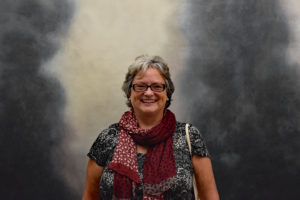Whilst staying in Shkodra, northern Albania, we visited the Marubi National Museum of Photography located on a pedestrianised street in the old town, and next door to our hotel, “Hotel Carmen”:https://www.silvertraveladvisor.com/review/accommodation/200494.
Pjeter Marubi was a prominent Albanian photographer in the late 1850s. As he didn’t have children of his own, he adopted the two sons of his gardener. Although one died tragically young, the second, Kel, followed in his adoptive father’s footsteps as did his son, Gegë.
The museum holds a vast collection of 500,294 photographs and negatives mounted on glass plates with 150,00 taken from 1856 to 1989, by the three generation Marubi dynasty. Fortunately, not all were on show! However, many photos have been digitised and can be viewed online www.marubi.gov.al using various search criteria e.g. dates or names.
The permanent exhibition was on the first floor (there is a lift). A timeline showed the development of universal photography and cameras above the line with information about Albanian photography below. Everything was easy to read and in both Albanian and English.
A dark room had trays which provided simulations of photos developing and there was a recreation of Marubi’s famous studio. We learned that there was always a painted backdrop which represented nature and real objects, such as carpets, chairs and vegetation, created a three-dimensional environment. Natural light from both a skylight and side window were controlled by curtains. I took the opportunity to have my portrait taken in the studio against a backdrop of darkening clouds which matched my grey hair beautifully!
Displays told the story of his family and how their careers had taken off with 70 captioned photographs each with background information. They were mainly landscapes and portraiture including some of Edith Durham, a London lady born in 1863. She travelled extensively throughout the country particularly the less visited northern highlands, writing about her journeys and promoting the country. She is still revered and known as ‘The Highlander’s Queen’. As many of the portraits were taken of people standing, it was interesting to see how they used stands for people to lean against and how they tried to hide them.
Finally, there was a display of old photographic equipment.
The ground floor had a library with various videos to watch telling us more about the life and times and about the rich legacy they had left. I wondered whether my goddaughter will think she’s inherited a rich legacy when she receives all my many photo albums.
The four-month temporary exhibition was of photos taken by eight south eastern Albanian photographers. Although most were untitled and undated, they were all taken around the turn of the twentieth century. They were mainly family photographs taken in studios to commemorate special events. Many were taken at funeral ceremonies which were then sent to relatives who lived abroad, although they may take months to arrive. The black and white, somewhat grainy images provided a good insight into life during this period.
The whole place was very light and modern, but at 700 Lek/£5.20 was one of the more expensive places we visited.








